Portugal tourism rewards travelers with the experience of a lifetime — whether you are there for the charming beaches, historic architecture, cities, idyllic scenery, picturesque landscapes, or for its relaxed lifestyle.
To better plan your next holiday in Portugal, we have created this Portugal tourism guide with some essential information on visiting the country.
Read the article to put together your Portugal tourism itinerary and discover:
- Why Portugal is one of the best places to visit in Europe
- The best time to visit Portugal
- The best places in Portugal to visit as a tourist
- The best things to do in Portugal
- Tips to make the best out of your trip
Why Visit Portugal?
Portugal is a captivating European destination for many reasons. Located on the beautiful Atlantic coast of the Iberian Peninsula in southwestern Europe, the country is a delightful blend of stunning natural landscapes, fascinating history, and warm, welcoming locals that attract visitors from across the globe.
Here are some reasons why Portugal is a must-visit destination:
Pleasant year-round weather: Portugal boasts a Mediterranean climate, providing pleasant weather throughout the year. With mild winters and sun-drenched summers, visitors can enjoy the country's attractions regardless of the season. |
Diverse landscapes: Portugal's landscape is a tapestry that caters to every traveler's preference. From the lush vegetation of the countryside to the beautiful beaches lining the Atlantic Ocean and the sun-kissed vineyards of the Douro Valley, the country offers a diverse range of scenic wonders. |
Friendly and welcoming people: Hospitality is deeply embedded in Portuguese culture. The locals are renowned for their warmth and friendliness, ensuring that visitors feel not just like tourists but as welcomed guests. |
Amazing cultural festivities: Portugal is a country that knows how to celebrate. Traditional festivals like the Santos Populares (or Popular Saints)that showcase the rich tapestry of Portuguese culture offer visitors the opportunity to immerse themselves in vibrant and lively celebrations. |
Show-stopping landmarks: Steeped in history, Portugal boasts 17 UNESCO World Heritage Sites, including architectural marvels, historic cities, and cultural landmarks that date back literal centuries. These sites stand as testaments to Portugal's rich and diverse heritage. |
World-renowned cuisine: Portuguese cuisine is a delectable journey that showcases the country's maritime influences and rich culinary traditions. From fresh seafood along the coast to iconic dishes like bacalhau (salted codfish), Portugal presents a gastronomic experience that tantalizes the taste buds. |
Affordability: For travelers seeking an unforgettable experience without breaking the bank, Portugal stands out as an affordable destination, providing excellent value for money compared to many other European countries. |
Variety of experiences: Portugal rewards visitors with a wide array of experiences that cater to all interests. History buffs can explore the country's cultural sights, while foodies can indulge in wine tasting in Douro’s picturesque vineyards. Thrill seekers will gravitate towards the thrill of water sports along the Atlantic coastline, while golf lovers will enjoy exploring Portugal's state-of-the-art courses, several of them designed by renowned architects. |
Charming cities to explore: From the historic streets of Lisbon with its charming Fado music to the ancient beauty of Porto, Portugal's cities are a treasure trove of architectural wonders, vibrant street life, and a modern cultural scene. |
The Best Times for Portugal Tourism
Many tourists want to know the best time to visit Portugal, but that depends on their preferences and the experiences they want to enjoy.
The country is blessed with a Mediterranean climate characterized by mild winters and warm summers, welcoming visitors with open arms every season. Whether you’re captivated by the vibrant blooms of spring, the sun-soaked days of summer, the rich colors of autumn, or the mild winter charm, each season in Portugal offers unique and enchanting experiences.
Below is a breakdown of every season and month to plan your Portugal tourism adventure.
Spring (March to May)
Spring heralds a burst of color across Portugal, with blossoming flowers and mild temperatures. This season is ideal for nature enthusiasts, as the countryside comes alive with lush greenery. The weather is pleasantly warm, making it conducive for exploring cities, hiking trails, and enjoying outdoor activities.
Ideal for: Sightseeing, outdoor activities
Summer (June to August)
Summer is the peak tourist season, attracting visitors with its long, sunny days and lively atmosphere. Coastal regions, including the beautiful beaches along the Atlantic Ocean, are popular during this time. Festivals and events abound, offering a chance to immerse yourself in the vibrant local culture. However, be prepared for larger crowds and higher prices.
Ideal for: Exploring Portugal’s beaches and enjoying vibrant music festivals
Autumn (September to November)
Autumn brings a more relaxed ambiance, with slightly cooler temperatures and fewer tourists. The landscapes retain their beauty, and the vineyards are particularly picturesque as the grape harvest season begins.
Ideal for: Portuguese wine tasting in renowned regions like the Douro Valley.
Winter (December to February)
Winter in Portugal is mild compared to many European destinations, making it an appealing option for those seeking a winter getaway. While Northern Portugal may experience cooler temperatures, the southern areas, including Lisbon and the Algarve, remain relatively mild. Winter is an excellent time to explore cities, enjoy cultural attractions, and indulge in Portugal’s delicious winter cuisine.
Ideal for: Escaping the colder months of other European countries.
Portugal Tourism in 2024 - The 12 Best Places to Visit
Porto
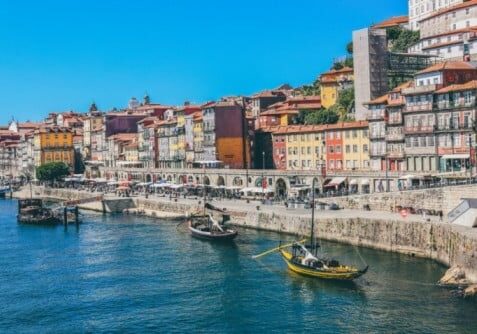
While the city’s architecture is worth a visit in its own right, the main attractions are the fantastic food and Portuguese wine. The cuisine is said to be the best in the country and is considered the best way to experience Portugal. To experience the authentic food of Porto, you can explore a culinary walk in the city.
Don’t forget to visit the port wine houses on the opposite side of the river to sample some port wine. About 55 kilometers outside Porto is Castelo de Guimarães, a medieval castle well worth a day trip.
Lisbon
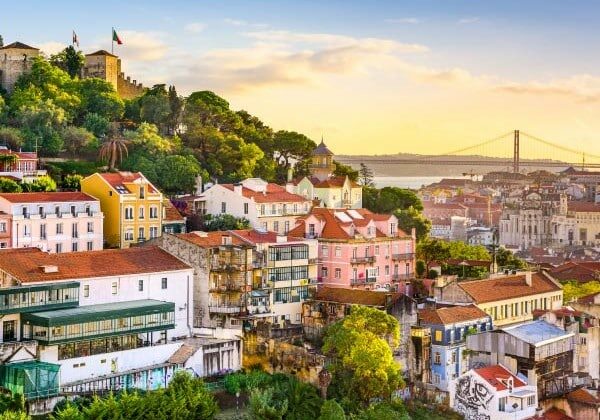
Make sure to visit the popular neighborhoods of Lisbon, such as Bairro Alto and Chiado, to uncover the true brilliance of the city. If you are an old soul, the pastel-colored buildings in the city will surely steal your heart, as will Alfama, one of the oldest parts of the city. You can also end the day in style by taking a cruise down the River Tagus on a sailing tour, watching a magical sunset set over the water as you enjoy a glass of Portuguese wine or a cold “imperial” (small Portuguese beer). Remember to include Torre de Belém and Jerónimos Monastery (A UNESCO World Heritage site) on your ‘must see in Portugal’ list.
Funchal, Madeira
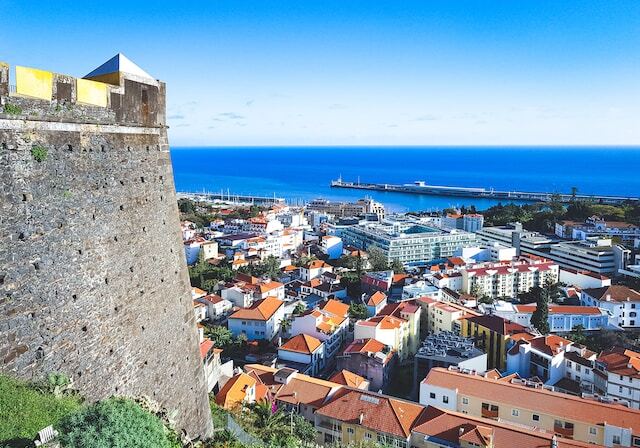
Previously famous as a favorite winter destination for senior citizens craving the sun, Madeira today has evolved into one of the most popular destinations in Portugal for all age groups.
Since the islands enjoy unlimited sunshine throughout the year, you can visit Madeira anytime. If you plan to explore the islands at the end of the year, you’ll be in for a treat, as the New Year’s Eve party on the island is something you’ll remember for years to come.
Lagos
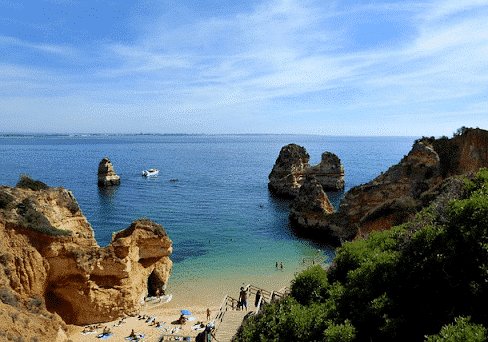
In addition to the historical sites, the city also has exciting nightlife, excellent restaurants, and a relaxed vibe.
If you are in Lagos, visit Ponta da Piedade, an area of natural limestone formations, and Parque Zoológico de Lagos (Lagos Zoo). You’ll also find top beaches in these regions, such as Praia do Camilo and Meia Praia.
Albufeira

This charming coastal city is known for its extensive white sandy beaches, diving and surfing spots, dolphin-watching viewpoints, and boat tours.
If you are visiting Albufeira, don’t miss exploring popular attractions like Zoomarine Algarve, Praia de São Rafael, PortoBay Falésia, Vila Joya, Vila do Ouro, and the historical center of Albufeira.
Coimbra
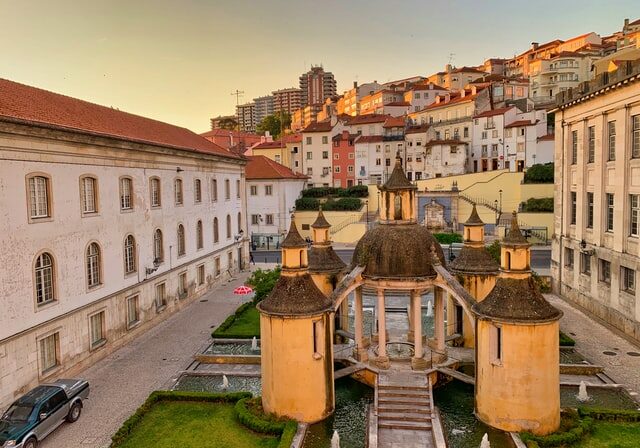
If you plan to visit this riverfront city, make sure you have time to check out the university campus and, specifically, its baroque library, the Biblioteca Joanina – hailed as one of the most beautiful libraries in the world. The 18th-century bell tower is also well worth a visit.
Braga
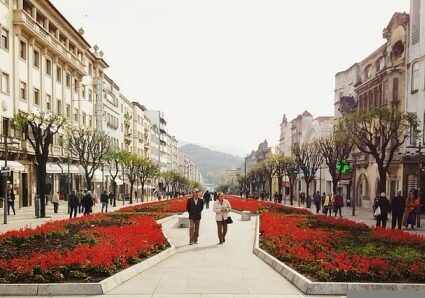
The stunning Sanctuary of Bom Jesus do Monte is close to the town, set against a backdrop of hills and surrounded by beautiful gardens. A few tourist destinations that you should definitely visit in Braga are Sé (Cathedral), Museu de Arte Sacra (Museum of Sacred Art), Antigo Paço Episcopal, Museu dos Biscainhos (Museu Etnográfico e Artístico), Museu de Arqueologia Dom Diogo de Sousa (Dom Diogo de Sousa Archaeology Museum), Museu Pio XII (Pio XII Museum), Fonte do Ídolo (Idol Fountain), and Capela São Frutuoso de Montélios.
Braga is also the fourth-largest city in Portugal in terms of population. Since it is close to the University of Minho, it is quite popular among international students. Packed with restaurants, bars, cafes, hotels, and popular shops, there are many young people living in Braga.
São Miguel Island, the Azores
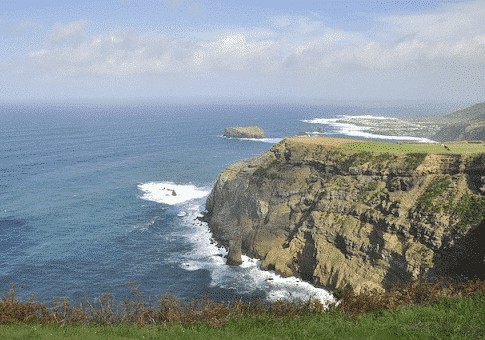
Travel around the island and discover small villages, hot springs, and other natural wonders. Here are a few popular attractions in the area that you must not miss: whale watching trips, Lagoa das Sete Cidades, Gorreana Tea Factory, Caldeiras Vulcânicas, and Lagoa das Empadadas.
Sintra
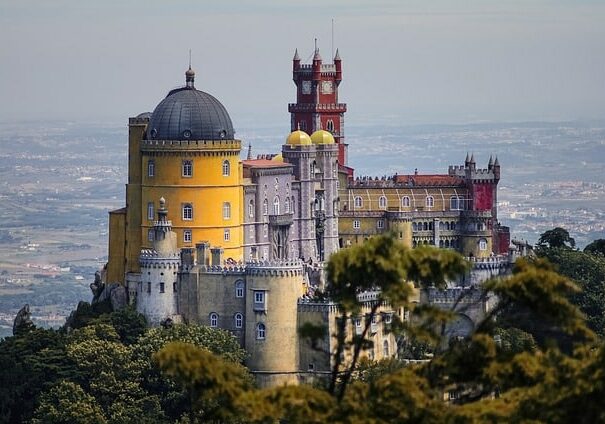
Sintra is adorned with fairytale-like palaces, including the iconic Pena Palace, which perches majestically atop the Sintra Mountains. The town’s historic center, a UNESCO World Heritage site, boasts narrow cobblestone streets lined with charming cafes, boutique shops, and colorful houses.
Its cultural richness extends beyond its architectural marvels, as it has been a source of inspiration for poets and writers throughout history. From the mystical Moorish Castle to the lush gardens of Quinta da Regaleira, Sintra is a destination where history, nature, and creativity converge, making it one of the best places to experience the magic and allure that define Portugal.
Évora
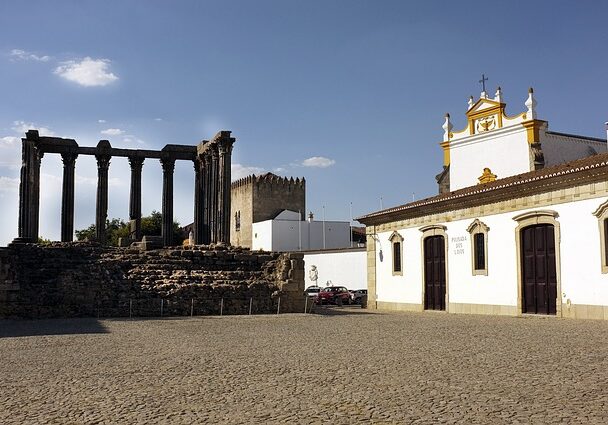
Évora’s historic center unfolds like an open-air museum, where labyrinthine streets lead to charming squares adorned with fountains and historic buildings. The city’s crown jewel, the Évora Cathedral, is a testament to centuries of craftsmanship and is a must-visit for those seeking a glimpse into Portugal’s medieval past.
Beyond its architectural marvels, Évora embraces a vibrant cultural scene, with local markets, traditional festivals, and a culinary landscape that showcases the region’s gastronomic delights.
Douro Valley
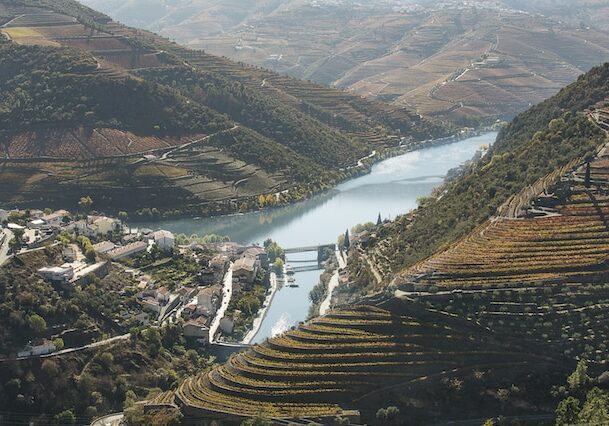
Renowned for producing the world-famous port wine, this UNESCO World Heritage site is a testament to the harmonious relationship between nature and human ingenuity. The landscape is a patchwork of vibrant greenery, with rows of grapevines punctuating the slopes, creating a picturesque setting that captivates the soul. The terraced hills not only contribute to the visual spectacle but also play a crucial role in the production of the region’s exceptional wines.
Visitors can explore historic wine estates, known as quintas, where the winemaking tradition is passed down through generations. Cruising along the Douro River unveils panoramic views of the valley, enhancing the immersive experience. Beyond the vineyards, the Douro Valley boasts charming villages, historic landmarks, and a serene ambiance that makes it a haven for those seeking a tranquil retreat amid Portugal’s stunning natural beauty.
Ericeira
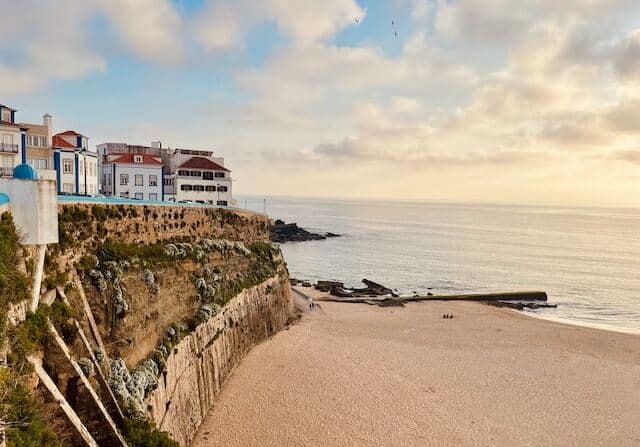
The town seamlessly marries the traditional Portuguese fishing village ambiance with a modern, bohemian flair, which is evident in its eclectic mix of seafood restaurants, artisan shops, and charming cafes. Its rugged cliffs and pristine beaches invite leisurely strolls, providing a sense of tranquility and connection with nature. As the sun sets over the Atlantic, the town comes alive with a relaxed energy, making it an ideal spot to savor fresh seafood or simply unwind by the ocean.
Tips for Portugal Tourism
To ensure your trip to Portugal is as smooth and enjoyable as possible, consider these tips, which encompass everything from cultural nuances to practical travel advice.
Learn basic Portuguese phrases
Your Portugal tourism will not be complete without immersing yourself in the language. While many locals, especially in urban areas such as Lisbon and Porto, speak English, learning a few basic Portuguese phrases can go a long way. The Portuguese appreciate visitors who try to communicate in their native language, even if it’s just a simple “obrigado” (thank you) or “bom dia” (good morning). Even something as simple as numbers can help you when ordering
Explore beyond the main cities
While Lisbon and Porto are undoubtedly captivating, venture beyond the most popular cities to discover Portugal’s true essence. Explore the charming villages of Sintra, the historic town of Évora, or the Douro Valley’s scenic vineyards. Each region offers a unique perspective on Portugal’s rich history and natural beauty.
Use public transportation
Portugal tourism offers an efficient and well-connected public transportation system. Consider using trains and buses to explore different regions, offering both convenience and stunning scenic routes. Additionally, walking is a fantastic way to soak in the atmosphere of cities and coastal areas. Lisbon also has a network of trams that take you through the city’s main tourist spots.
Currency and payment
The official currency is the Euro (€), and credit cards are widely accepted. However, carrying some cash is advisable, especially in more remote areas or when visiting local markets. Inform your bank about your travel plans to avoid any issues with card transactions.
Be weather prepared
While the country generally enjoys pleasant weather, it’s essential to be prepared for sudden changes, particularly in northern Portugal. Pack layers, a light jacket, and comfortable walking shoes to accommodate diverse landscapes and weather conditions.
Bring comfortable walking shoes
For many tourists, exploring Portugal often involves navigating cobbled streets, historic sites, and natural landscapes. Ensure you have comfortable walking shoes to make the most of your journey without discomfort.
Book your accommodation in advance
Portugal’s tourist destination popularity means accommodations can fill up quickly, especially during peak seasons. To secure the best options and rates, booking your accommodation well in advance is advisable.
How to Get to Portugal

Porto Airport (Francisco Sá Carneiro Airport) is a key entry point for those exploring northern Portugal. Situated near Portugal’s second-largest city, this airport offers excellent connectivity, making it an ideal choice for travelers from various European destinations.
If your destination is the sun-soaked Algarve, Faro Airport (Algarve Airport) is your gateway to this southern paradise. Handling a significant influx of tourists, Faro Airport efficiently connects visitors to the stunning coastline and resort towns.
In addition to these major airports, Portugal boasts several regional airports, such as Madeira Airport and João Paulo II Airport in the Azores, providing accessibility to different corners of the country. These airports, equipped with modern facilities, ensure a seamless travel experience for visitors arriving for leisure or business.
When planning your journey to Portugal, the best way is to explore the diverse flight options that major carriers like TAP Air Portugal, Ryanair, and EasyJet offer. These airlines provide direct and connecting flights, enhancing flexibility and convenience for international travelers. For the island regions like Madeira, you’ll most likely have to fly via Lisbon or another major airport first—like Heathrow or Madrid.
Upon arrival, efficient transportation options, including taxis, rental cars, and public transportation like buses and metro services, are readily available at the Portuguese airports. This ensures a smooth transition from the airport to your chosen destination, allowing you to explore Portugal promptly.
Portugal Tourism Statistics
Portugal’s tourism industry thrived in 2023, breaking past previous records with more than 30 million tourists visiting the country. Nuno Fazenda, the Secretary of State for Tourism, Commerce, and Services, announced this boom. He reported that Portugal welcomed over 30 million guests in 2023, resulting in 77 million overnight stays and around €25 billion in tourism revenue.
Of that number, about 2.38 were from Spain, 2.35 million visited from the United Kingdom, and 2.3 million came from the United States.
Portugal Tourism Visa Requirements
Visa requirements for visiting Portugal as a tourist varies depending on your country of origin. These requirements can change, so you should always check for the most up-to-date information.
Schengen Visa
Portugal is a member of the Schengen Area, and if you are from a non-Schengen country, you may need to obtain a Schengen visa for short stays (up to 90 days within a 180-day period). The Schengen visa allows you to travel to all Schengen countries, including Portugal.
Visa-Free nationals
Some countries’ citizens are exempt from the Schengen visa requirement and can enter Portugal for short stays without a visa. The list of visa-free countries includes many European countries, the United States, Canada, Australia, and others.
Entry requirements
Regardless of the visa they require, all travelers must meet certain entry requirements. These typically include having a passport valid for at least three months beyond the intended departure date.
Country-specific requirements
Some countries have bilateral agreements with Portugal, affecting visa requirements. It’s essential to check the specific requirements for your country of origin through the official website of the Portuguese embassy or consulate in your home country.
Longer Stays and other visas
Suppose you plan to stay in Portugal for longer than 90 days or for purposes such as work, study, or family reunification. In that case, you may need to apply for a national visa or residence permit before traveling. Specific requirements and application procedures vary based on your country of origin and the purpose of your stay.
Exploring Visa and Immigration Options for Portugal
If you're considering making the move to Portugal, it's essential to be informed about the various visa and residency options available. The Golden Visa Portugal program is an attractive option for many, offering residency to investors and their families. For those eyeing retirement in this beautiful country, the Retirement Visa (D7) is tailored for you. Digital nomads can take advantage of both short and long stay options with the Nomad Visa (D8). Meanwhile, the NHR - Non Habitual Tax regime provides significant tax benefits for new residents.
For the entrepreneurial spirit, Portugal offers the Entrepreneurship/startup Visa (D2) - Start-up Visa (open company) tailored for those looking to establish their businesses in the country. Those with specialized skills can explore the Work visa for highly qualified employees (D3). Additionally, if you have Portuguese ancestry, you might be eligible for Citizenship by descent.
However, moving to a new country isn't just about visas. If you're thinking of buying property, our guide on Buying Property in Portugal can offer invaluable insights. Dive deeper into the immigration process with our comprehensive Portugal immigration guide. For Americans specifically looking to relocate, we have curated information on Americans moving to Portugal. Lastly, one can't forget the importance of the NIF (Tax Registration Number), a crucial step in any relocation process.
Frequently Asked Questions
What is Portugal famous for?
Portugal is best known for its rich history, art, architecture, gastronomy, cultural outlook, and fine-tasting wines. Additionally, the country is renowned for its beaches, stunning natural landscapes, and extremely welcoming and warm population.
Is Portugal safe and suitable for tourists?
Portugal is a relatively safe country. From walking through the cobbled-path streets of its popular cities, exploring the mighty mountains in the north, experiencing the charming countryside, or relaxing on the beaches, if you prepare for your trip and are vigilant, you can travel across the country safely and soundly.
What is the best month to go to Portugal?
The best time to visit Portugal is during spring (March-May). Apart from this, you can also travel to the country during the fall months (September and October) to enjoy the warm weather peacefully.
What are the most famous tourist attractions in Portugal?
The most popular tourist attractions in Portugal are: Mosteiro dos Jerónimos, Oceanário de Lisboa, Palácio Nacional de Sintra, Kayaking the Lisbon Coast, Torre de Belém, Bom Jesus do Monte, Universidade de Coimbra, Museu Calouste Gulbenkian, Castelo de Guimarães, Igreja de Santo António and the Museu Municipal, Silves Castles, Lisbon Cathedral,the Roman Temple at Évora and more.
What is the best month to visit Portugal?
The best time to visit Portugal is typically during the late spring months of May and June or in the early fall from September to October. During these periods, the weather is pleasantly mild, and tourist crowds are generally more manageable than in the peak summer season. The diverse landscapes, from historic cities to coastal areas, are at their most inviting, offering a delightful experience for travelers exploring Portugal’s rich culture, vibrant festivals, and stunning scenery.
Is Portugal expensive for vacation?
Portugal is generally considered an affordable destination for vacation, especially when compared to other European countries. While prices can vary depending on the region and specific activities, visitors often find that their money goes further in Portugal, allowing them to enjoy a rich cultural experience, delectable cuisine, and diverse landscapes without breaking the bank. From accommodation to dining and transportation, Portugal offers excellent value for travelers seeking a memorable and budget-friendly holiday.
Who visits Portugal the most?
Portugal attracts a diverse range of visitors. Spain has the highest proportion of visitors, while the United Kingdom ranks second, with the United States ranking third. There are also many visitors from other European countries. European tourists, including those from Germany and France, often flock to Portugal for its beautiful beaches, rich cultural heritage, and vibrant cities.
Why do so many Americans go to Portugal?
Many US nationals choose to visit Portugal due to its unique blend of captivating attractions and inviting ambiance. The country’s rich cultural heritage, delectable cuisine, and renowned wine regions also contribute to its appeal. Additionally, Portugal’s welcoming atmosphere, English-friendly environment, and the perception of affordability compared to other European destinations make it an attractive choice for US travelers seeking a memorable and well-rounded vacation.
Where are the best places to visit in Northern Portugal?
Northern Portugal has a delightful mix of large and popular cities, historic sites, and beautiful scenery. Must-sees include Porto, the Douro Valley for wine tasting and boat tours, Braga, Guimarães (Portugal’s birthplace), and Peneda-Gerês National Park for hiking and relaxation.
Where in Portugal can I find idyllic scenery?
Algarve has stunning beaches, Azores has volcanic landscapes and colorful flowers, Douro Valley is great for its scenic vineyards, while Sintra has unique palaces and hidden spots. Then there’s Peneda-Gerês National Park, which includes mountain hikes and charming villages.
Does Portugal have any World Heritage sites?
Portugal has 17 UNESCO World Heritage Sites, including the ornate monasteries of Batalha and Jerónimos and the charming, fortified town of Elvas.
What are the best destinations in Portugal by the Atlantic Ocean?
Portugal’s stunning coastline, stretching over 1,100 kilometers along the Atlantic Ocean, offers a diverse range of experiences. Sun-seekers flock to the Algarve’s golden beaches and dramatic cliffs, while Lisbon’s vibrant culture and historic charm captivate visitors. Porto, famous for its port wine production, offers cruises along the Douro River. Sintra, a fairytale escape nestled in the hills, boasts extravagant palaces and lush gardens. For an unforgettable adventure, venture to the Azores, a volcanic archipelago known for its dramatic landscapes, whale watching, and natural thermal pools.
What is the nicest part of Portugal to visit?
“Nicest” is subjective, but Portugal offers something for everyone. The Algarve stuns with beaches, Lisbon charms with history, Porto offers wine and cruises, and the Azores boast volcanic beauty.
Is Portugal expensive for vacation?
Portugal’s affordability varies. Tourist areas can be pricier, but overall, it’s a budget-friendly destination compared to some European countries. Research accommodation and activities to fit your comfort level.
Which are the best hiking trails in Madeira, Portugal?
Experience true Portugal tourism at one of the offline islands. Madeira is one of the ‘must-visit cities’ of Portugal and is renowned for its stunning hiking trails. Some of the best include the Levada do Caldeirão Verde, which offers lush forest scenery and waterfalls; the Pico Ruivo trail, leading to the highest peak on the island with panoramic views; and the Vereda da Ponta de São Lourenço, a coastal trail with dramatic cliffside views and unique rock formations.
How to rent a car and drive through the Algarve region?
Book online with reputable rental companies in advance for the best rates to rent a car in the Algarve. Ensure you have a valid driver’s license and credit card. Driving in the Algarve is straightforward, with well-maintained roads and clear signage. Explore scenic coastal routes, charming villages, and beautiful beaches at your own pace. Be mindful of parking regulations and toll roads.




